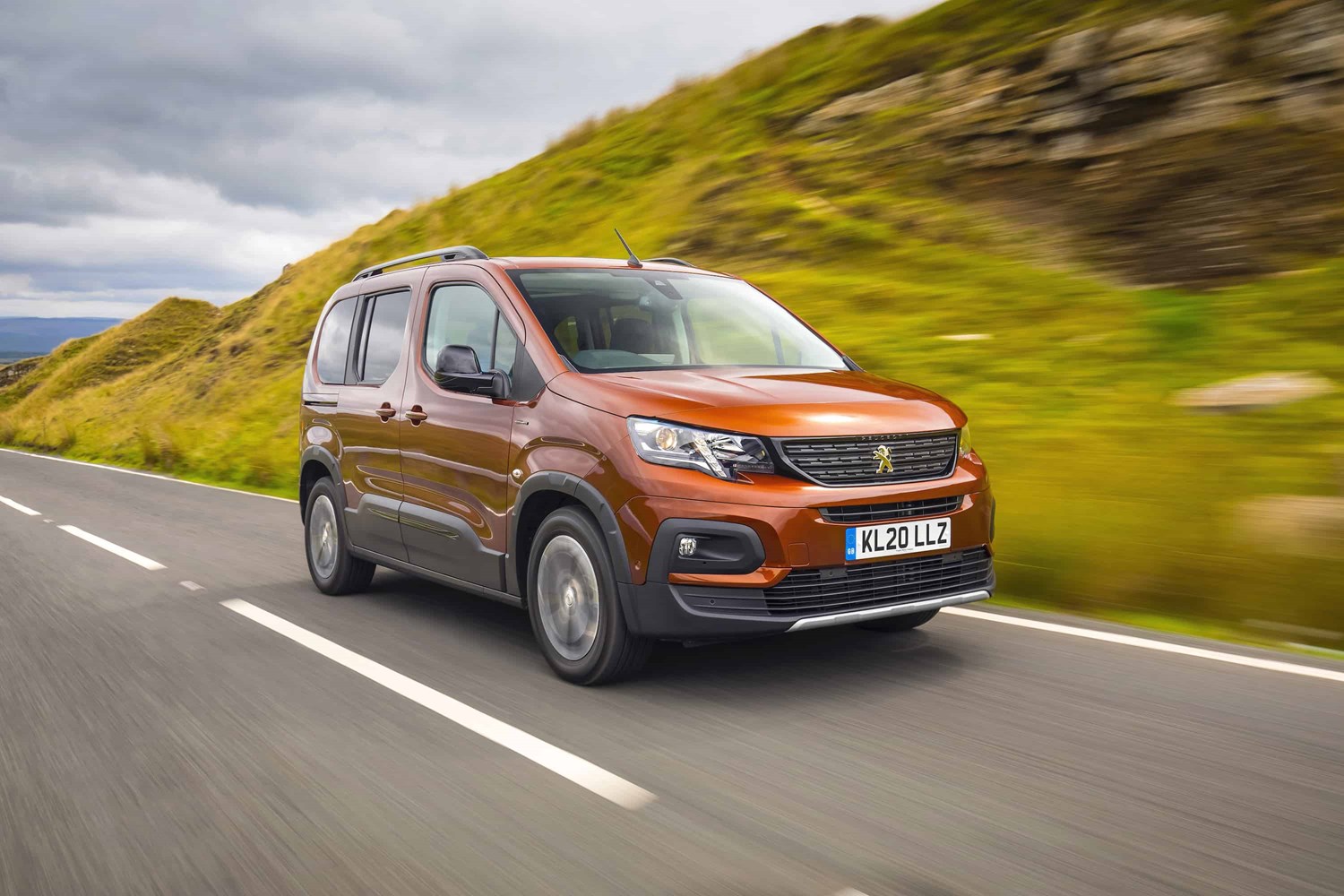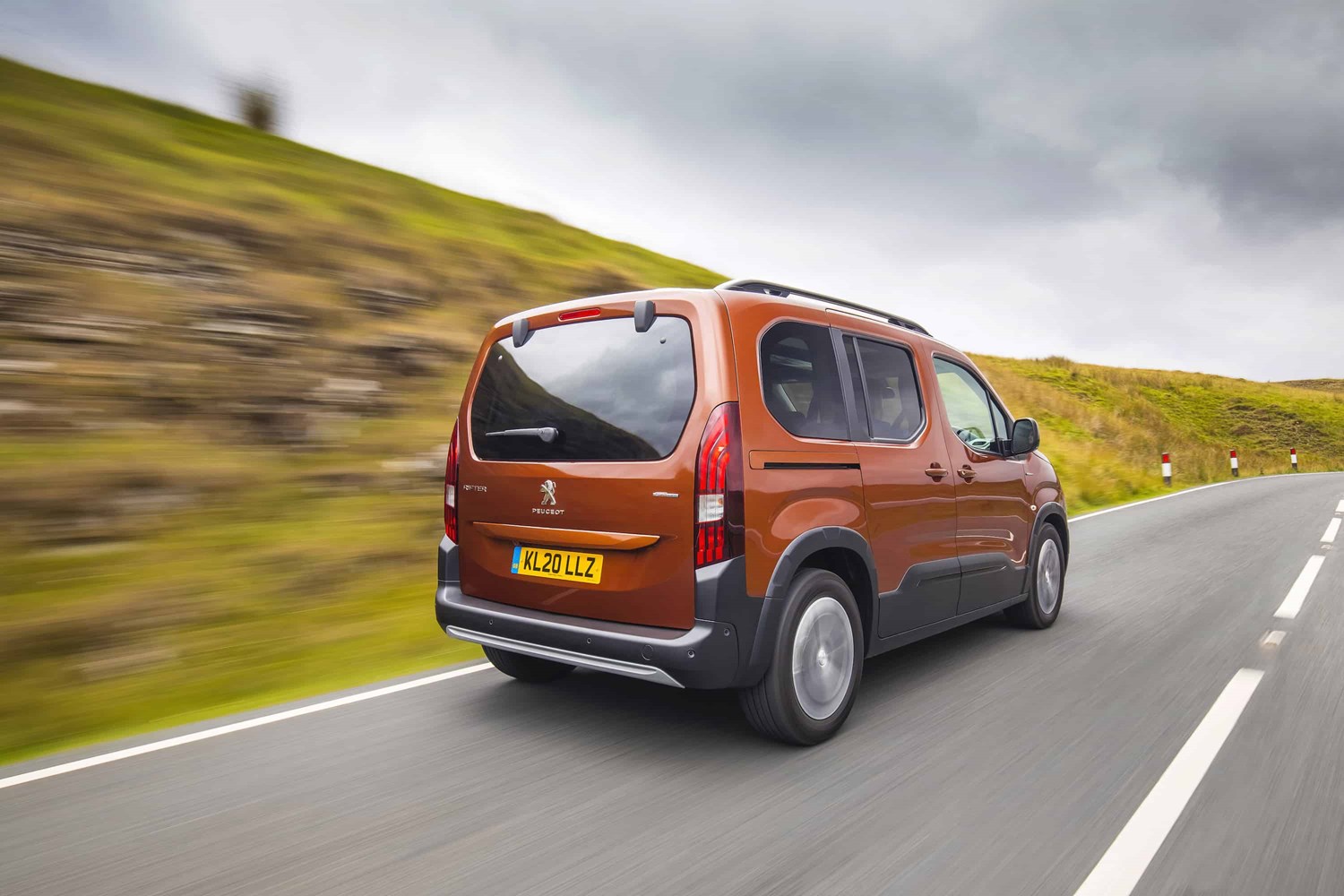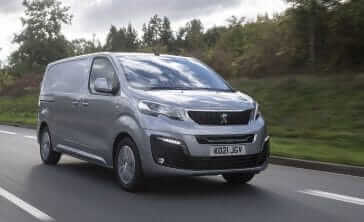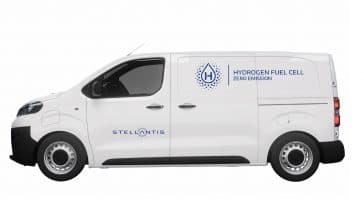Model review
It almost seems like the easiest way to create a practical, family focused compact MPV. Take a small commercial vehicle, drop some seats in the rear, remove the window panels and replace them with glass, and make it more comfort orientated, and hey presto, a ready to go small MPV.
That’s exactly what Peugeot did with the Partner Combi back in the early noughties, and underneath it shared much of the DNA with its brand partner the Citroen Berlingo Multispace and Vauxhall Combo Life.
Of course, because it was inherently based on a van, it meant that while it offered huge levels of space and practicality, it was pretty crude – not only by the way it looked, but the way it drove too.
Over the years though, it’s evolved into a more car-like offering, both in terms of styling, but also the way it drives, and this latest version is now available with either five or seven seats, making it more practical than ever before.

Current model
Whereas with previous versions of the converted vans, it was a game of spot the difference between Peugeot and Citroen versions. This latest model though does stand apart, thanks to its different front end and trim styles compared to its sibling. While it’s pretty obvious by its shape that its roots are firmly placed in a commercial vehicle, the distinctive Peugeot family face and cladding, roof rails and wheel-arch extensions give it a bit more of a rugged appearance.
Inside, the dash is identical to the van it’s based on and includes Peugeot’s i-Cockpit instrument cluster, which is housed high up on the dash, so you look over the steering wheel rather than through it.
Value for money
Prices for the Rifter start at £21,795, which is fractionally more expensive than the Vauxhall and Citroen. If you’re looking for no frills motoring and just need a spacious, practical MPV, then its siblings will offer better value for money.
But if you want a stronger image and better levels of equipment, then the Peugeot is well worth considering. If you want more style, though, then the Renault Grand Scenic would be a good option.
The model’s slightly stronger image seems to aid values, with the model holding its value slightly better than rivals. Used examples start from around £14,000, which will get you an 18-month-old example with around 10,000 miles on the clock. It will be a low spec example, though, with more stylish GT Line versions available for £15,000.
Looks and image
As we’ve already mentioned, the Rifter is van-like in its appearance, and is very much a box on wheels, but Peugeot has made an effort to soften its looks for a wider audience. By adding roof rails, body cladding, wider wheel arches and alloy wheels, it certainly disguises its commercial roots slightly.
What’s also great about converting a van is that you get most of the practicality carried over too. So, you get two rear sliding doors and a rear glass hatch on the boot. You can tell straight off from the interior that it’s been built to a budget. Of course, commercial vehicles are built to be durable and withstand heavy use, and while family cars are designed to do a similar job, little effort has been made to lift the quality of the materials on show.
Space and practicality
Much like the Partner van which it’s based on, the Rifter is available in two wheelbase flavours. The biggest change is the addition of a seven-seats available on both versions. That flexibility will be more than suitable for most families.
What’s so special about the Rifter, though, is how usable the cabin is. It’s extremely well packaged and thought through, with 180 litres of space in just the cubby holes and door bins alone – that’s similar to what you would find in some city cars.
What’s also great is the flexibility of the seating. The second row of seats can be folded into the floor with the ability to remove the third pair individually. The long wheel-based version, unsurprisingly, has van like levels of space, boasting 1,050 litres with the seats in place, growing to 4,000 litres with them folded flat. The standard version has slightly less, with 775 litres of space with the seats up, expanding to 3,000 litres with all the seats down.
Engines
While there are no electrified versions in the current line-up, Peugeot has confirmed there is one on the way. For now, the choice is limited to a mix of petrol and diesel engines.
The diesel range starts with a 74bhp 1.5-litre which feels a little lacklustre when it comes to performance, 0-60mph takes a laboured 16 seconds and it feels every bit as slow as it is. But let’s be honest, no one buys a van-based MPV for thrills behind the wheel.
For more pep, we’d recommend the more powerful 128bhp (Blue HDi 130) as it will do the best job around town but also at motorway pace, while managing to keep good economy. A 100bhp derivative is also available.
Petrol wise, the turbocharged 109bhp 1.2-litre Puretech 110, is a good option. It doesn’t have the low-down pull of the diesel, but it is flexible and feels peppy enough if you’re happy to push it hard.
The Rifter, while having rugged styling, doesn’t have the go-anywhere ability its looks might suggest. Yes, it’s got a slightly higher ground clearance, but it doesn’t come with any off-roading or four-wheel drive technology you’ll find in more expensive crossovers or SUVs.
Running costs
Running costs across the range should be pretty manageable, although there are no electric or hybrid versions for ultimate economy or low emissions. The Puretech 110 is likely to be the best seller, but the BlueHDi diesels are going to be the cheapest to run with better fuel economy.
The BlueHdi 75 will average around 68mpg with emissions of 109 g/km of CO2, and at the other end of the scale, the BlueHDi 130 will return an official economy of 65.7mpg and emissions of 114g/km.

Things to look out for
The Rifter is not going to tick everyone’s boxes especially when it comes to build quality. But for a large, active family, that will use it for taking the dogs for muddy walks, or carrying equipment for active lifestyles, then it’s definitely worth considering.
The key things to look at include the spacious interior, in fact there are so many cubby holes and storage areas that it could be easy to lose smaller items. The main thing to check though is how you find it behind the wheel. It isn’t the most engaging car to drive and some crossovers, albeit not as practical, are more refined, more enjoyable and more capable on and off road.
As for reliability, this is still a new model and features parts used across various Peugeot, Citroen and Vauxhall cars and vans, so it should prove to be pretty dependable.
Rivals
While many customers who are looking for seven-seats and good levels of practicality are turning to crossovers, there’s still enough demand for ‘boxier’ MPVs. The Rifter shares much with the Citroen Berlingo and Vauxhall Combo Life.
If you want to look elsewhere, then the Renault Grand Scenic offers good levels of practicality in a stylish package. The Fiat 500L is also a stylish offering which may not have the character or fun of the smaller 500, but it’s well packaged and quirky. If you’re looking for a more premium finish or more engaging drive, then the more expensive Volkswagen Touran or Ford S-Max are well worth considering.
Depreciation
The Rifter is more expensive than brand siblings, the Citroen Berlingo and Vauxhall Combo Life. That means it should hold its value better than its siblings. We suggest browsing pre-registered models to take advantage of any savings next to brand new models.






